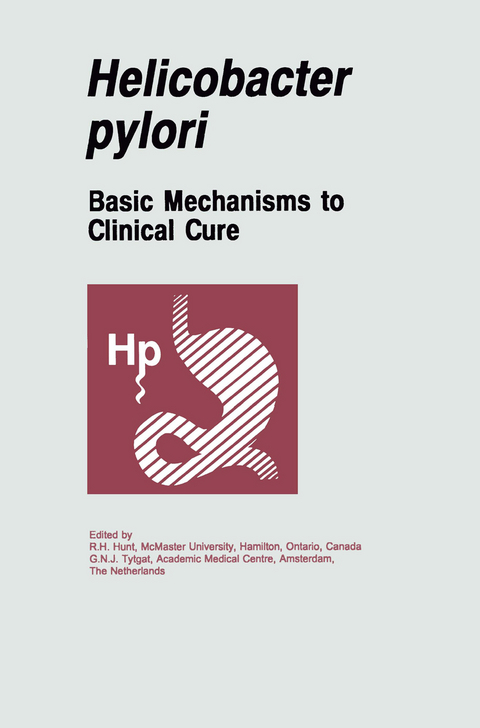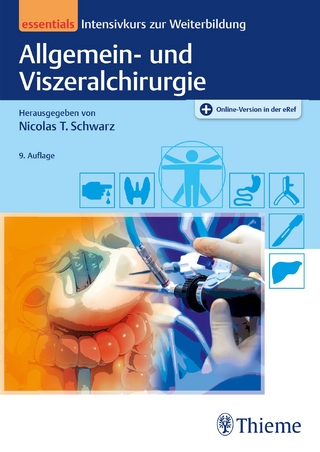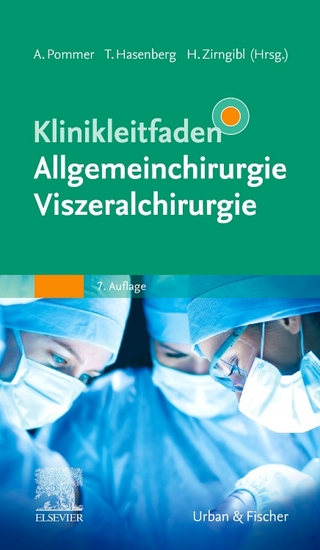
Helicobacter pylori
Springer (Verlag)
978-94-010-4620-6 (ISBN)
The book contains chapters by a multidisciplinary, international group of basic scientists and clinical investigators who focus on various microbiological aspects of H. pylori, on the role of H. pylori in peptic ulcer and gastric cancer, and the current status of therapy.
The book contains the proceedings of the conference on `Helicobacter pylori: Basic Mechanisms to Clinical Cure', held at Amelia Island, Florida, U.S.A., on November 3--6, 1993.
Section I. Basic Bacteriology of H. pylori.- 1. In vivo models of gastric Helicobacter infections.- 2 H. pylori species heterogenicity.- 3 H. pylori urease.- 4 Basic bacteriology of H. pylori: H. pylori colonization factors.- Section II. Prevalence and Mechanisms of Spread of H. pylori.- 5 Epidemiology of H. pylori in Western countries.- 6 H. pylori in developing countries.- 7 Prevalence/disease correlates of H. pylori.- 8 Reinfection with H. pylori.- Section III. Mechanisms of H. pylori Induced Damage.- 9 Breakdown of the mucus layer by H. pylori.- 10 Decreased hydrophobicity of gastroduodenal mucosa due to H. pylori infection in man.- 11 Adherence and internalization of H. pylori by epithelial cells.- 12 Mechanisms of ammonia-induced gastric mucosal injury: role of glutathione and cysteine proteases.- 13 Lipopolysaccharide (LPS)-related damage by H. pylori.- 14 The cpn60 heat shock protein homologue of H. pylori.- 15 Gastric mucosal injury: interactions of mast cells, cytokines and nitric oxide.- 16 H. pylori supernatant contains a novel chemotactic factor for monocytes different from FMLP.- 17 H. pylori-induced neutrophil activation and production of toxic oxygen radicals.- 18 Polymorphonuclear leukocytes traffic into the gastric mucosa and through the gastric mucosal barrier in H. pylori infection: is that bad?.- 19 H. pylori vacuolating toxin.- 20 H. pylori alcohol dehydrogenase.- Section IV. Hormonal Disturbances in H. pylori Infection.- 21 Effect of H. pylori infection on gastrin and gastric acid secretion.- 22 H. pylori, gastrin and somatostatin.- 23 Parietal cell responsiveness in H. pylori infections.- 24 Role of bacterial amines in H. pylori-associated hypergastrinaemia.- 25 Do gastric mucosal nerves remodel in H. pylori gastritis?.- Section V. ImmunologicalResponse to H. pylori.- 26 Overview of the immune response to H. pylori.- 27 Specific H. pylori immune response.- 28 B cell responses in H. pylori infection.- 29 T cell subsets in H. pylori-associated gastritis.- 30 Down-regulation of the immune response to H. pylori.- 31 The clinical value of a saliva diagnostic assay for antibody to H. pylori.- Section VI. Gastroduodenal Inflammation in H. pylori Infection.- 32 Spectrum and implications of inflammation with H. pylori.- 33 ‘Hypertrophic’ gastritis in H. pylori infection.- 34 Long-term consequences of H. pylori infection: time trends in H. pylori gastritis, gastric cancer and peptic ulcer disease.- 35 Determinants of gastritis phenotype in H. pylori infection.- 36 The ulcer-associated cell lineage (UACL): a newly-recognised pathway of gastrointestinal differentiation of importance in the natural healing of peptic ulcer disease.- Section VII. Determinants of Clinical Outcome of H. pylori Infection.- 37 Acute infection with H. pylori.- 38 H. pylori in asymptomatic people.- 39 Determinants of clinical outcome of H. pylori infection: duodenal ulcer.- 40 H. pylori and gastric ulcer disease.- 41 Functional dyspepsia and H. pylori: a controversial link.- 42 H. pylori and NSAIDs: a meta-analysis on interactions of acute gastroduodenal injury, gastric and duodenal ulcers and upper gastrointestinal symptoms.- Section VIII. Relationship of H. pylori Gastric Carcinogenesis and Lymphoma.- 43 H. pylori and gastric cancer: the significance of the problem.- 44 The ascorbic acid story.- 45 Role of bacterial overgrowth in gastric carcinogenesis.- 46 The role of PCR techniques in the epidemiology of H. pylori infections.- 47 Role of H. pylori in atrophic gastritis and intestinal metaplasia.- 48 H. pylori-associated gastric lymphoma.-49 Animal models for Helicobacter-induced gastric and hepatic cancer.- 50 Flaws in H. pylori-related carcinogenesis hypothesis.- Section IX. Therapy of H. pylori Infection.- 51 Determinants of antimicrobial effectiveness in H. pylori gastritis.- 52 Mucosal antibiotic levels.- 53 H. pylori eradication.- 54 H. pylori resistance to antibiotics.- 55 The role of acid suppression in the treatment of H. pylori infection.- 56 Prospects for vaccination against H. pylori infection.
| Zusatzinfo | XIX, 612 p. |
|---|---|
| Verlagsort | Dordrecht |
| Sprache | englisch |
| Maße | 155 x 235 mm |
| Themenwelt | Medizinische Fachgebiete ► Chirurgie ► Viszeralchirurgie |
| Medizinische Fachgebiete ► Innere Medizin ► Gastroenterologie | |
| Medizin / Pharmazie ► Medizinische Fachgebiete ► Mikrobiologie / Infektologie / Reisemedizin | |
| Medizin / Pharmazie ► Medizinische Fachgebiete ► Onkologie | |
| Medizin / Pharmazie ► Medizinische Fachgebiete ► Pharmakologie / Pharmakotherapie | |
| Studium ► Querschnittsbereiche ► Infektiologie / Immunologie | |
| ISBN-10 | 94-010-4620-4 / 9401046204 |
| ISBN-13 | 978-94-010-4620-6 / 9789401046206 |
| Zustand | Neuware |
| Informationen gemäß Produktsicherheitsverordnung (GPSR) | |
| Haben Sie eine Frage zum Produkt? |
aus dem Bereich


